Discover 11 hidden attractions, cool sights, and unusual things to do in Setonaikai National Park (Japan). Don't miss out on these must-see attractions: Great Seto Bridge, Kōsan-ji, and The Kagawa Museum. Also, be sure to include Tatara Bridge in your itinerary.
Below, you can find the list of the most amazing places you should visit in Setonaikai National Park (Ehime).
Table of Contents
Great Seto Bridge
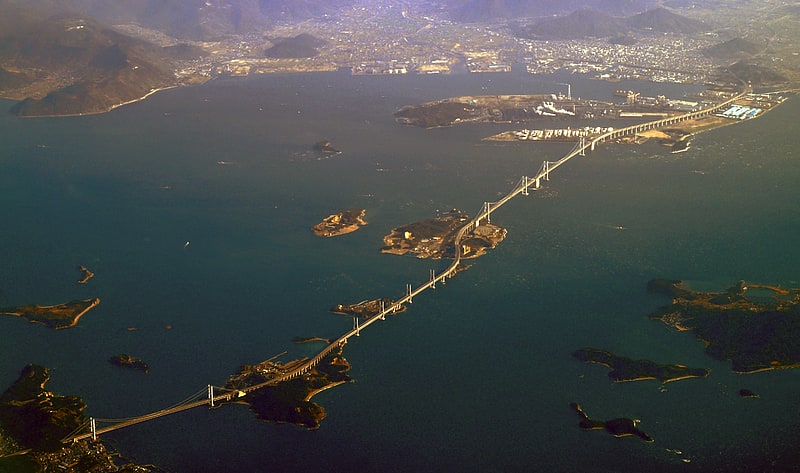
Also known as: 瀬戸大橋
Bridge in Japan. The Great Seto Bridge or Seto Ohashi Bridge is a series of double deck bridges connecting Okayama and Kagawa prefectures in Japan across a series of five small islands in the Seto Inland Sea. Built over the period 1978–88, it is one of the three routes of the Honshū–Shikoku Bridge Project connecting Honshū and Shikoku islands and the only one to carry rail traffic. The total length is 13.1 kilometers, and the longest span, the Minami Bisan-Seto Bridge, is 1,100 m.
Crossing the bridge takes about 20 minutes by car or train. The ferry crossing before the bridge was built took about an hour.
The bridges carry two lanes of highway traffic in each direction (Seto-Chūō Expressway) on the upper deck and one railway track in each direction (Seto-Ōhashi Line) on the lower deck. The lower deck was designed to accommodate an additional set of Shinkansen tracks for a proposed extension of the Shinkansen to Shikoku.[1]
Kōsan-ji
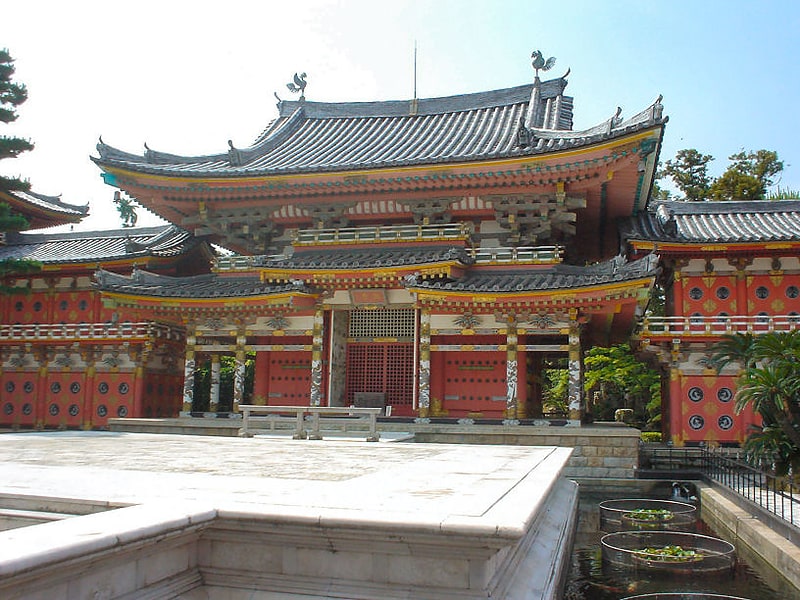
Also known as: 耕三寺
Temple in Onomichi, Japan. Kōsan-ji is a Hongan-ji school Jōdo Shinshū temple on the island of Ikuchijima in Onomichi, Hiroshima Prefecture, Japan. Founded by the industrialist Koso Kōsanji in 1936 in honour of his deceased mother, and with an area of approximately fifty thousand square metres, many of its structures are modelled upon the country's most famous historic temples and shrines. The Hill of Hope is a monument landscaped with five thousand square metres of Carrara marble, weighing some three thousand tons, by Kazuto Kuetani. The Kōsan-ji Museum houses over two thousand items, including nineteen Important Cultural Properties.[2]
Address: 553-2 Setodachosetoda, 722-2411 Onomichi
The Kagawa Museum
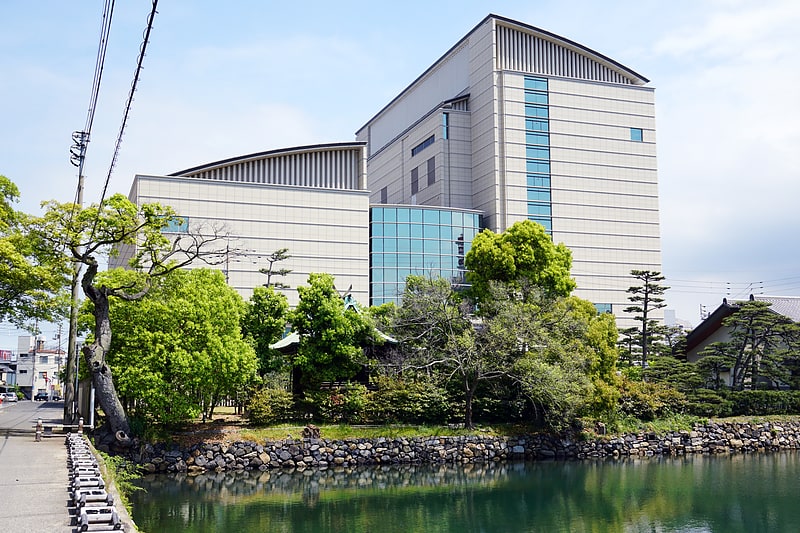
Also known as: 香川県立ミュージアム
Museum in Takamatsu, Japan. The Kagawa Museum is a prefectural museum in Takamatsu, Japan, dedicated to the history and art of Kagawa Prefecture. The museum opened in 2008, consolidating the three institutions of the Kagawa Prefectural Cultural Hall; Seto Inland Sea Folk History Museum; and Kagawa History Museum; the first two institutions now operate as annexes of The Kagawa Museum.[3]
Address: Setonaikai National Park, 5-5 Tamamo-chō
Tatara Bridge
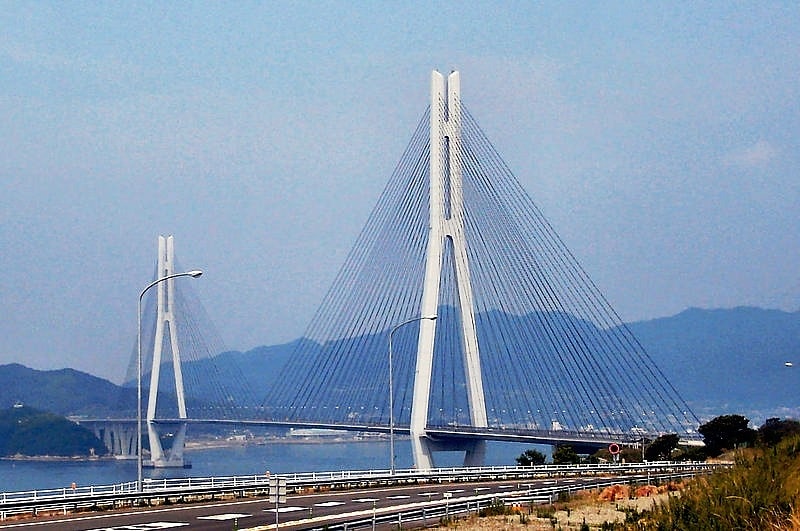
Also known as: 多々羅大橋
Cable-stayed bridge in Japan. The Tatara Bridge is a cable-stayed bridge that is part of the Nishiseto Expressway, commonly known as the Shimanami Kaidō しまなみ海道. The bridge has a center span of 890 metres. As of 2010 it has the fourth longest main span of any cable-stayed bridge after the Sutong Bridge. The expressway is a series of roads and bridges that is one of the three routes of the Honshū-Shikoku Bridge Project connecting the islands of Honshū and Shikoku across the Seto Inland Sea in Japan. The Kurushima-Kaikyō Bridge is on the same route.
The bridge, which opened on May 1, 1999, carries two lanes of traffic in each direction and has additional lanes for bicycles, motor bikes, and pedestrians.
The Tatara Bridge was originally planned as a suspension bridge in 1973. In 1989, the design was changed to a cable-stayed bridge with the same span. By building a cable-stayed bridge a large excavation for an anchorage would not be needed, thereby lessening the environmental impact on the surrounding area. The steel towers are 220 metres (722 ft) high and shaped like an inverted Y. The side-spans are 164.5 metres (540 ft) and 257.5 metres (845 ft) respectively, and there are also three very small cable spans.
Construction of the bridge took a little more than six years and was accomplished without any accidents. Many technological advancements were part of the design and testing of the bridge.[4]
Kurushima Kaikyō Bridge
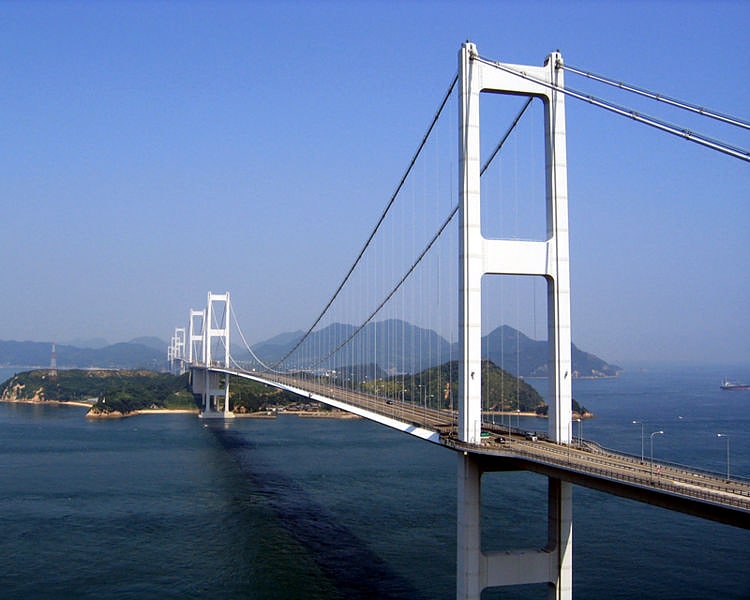
Also known as: 来島海峡大橋
Suspension bridge in Imabari, Japan. The Kurushima Kaikyō Bridge, which connects the island of Ōshima to the main part of Shikoku, was the world's longest suspension bridge structure when completed, in 1999. The bridge is part of the Shimanami Kaidō, an expressway that spans a series of islands and connects Hiroshima Prefecture in Honshū to Ehime Prefecture in Shikoku. The bridge and the expressway were both conceived by the Honshū-Shikoku Bridge Project.[5]
Okamura Island
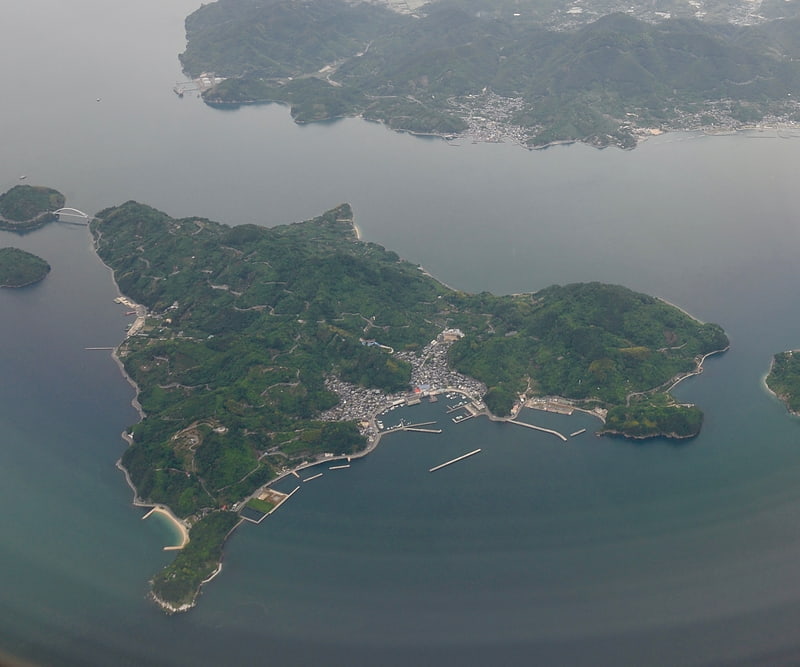
Also known as: 岡村島
Island in Imabari, Japan. Okamura Island is a small island in the Inland Sea of Japan. Administratively, it is part of the city of Imabari, Ehime Prefecture. The island is famous for mikan and butterflies. As of 2006, the population was about 1,000. The area is 3.13 km² and the circumference is 11.1 km. Access is from Imabari by fast or slow ferry boat, or by road from Kure.[6]
Hiroshima City Museum of History and Traditional Crafts
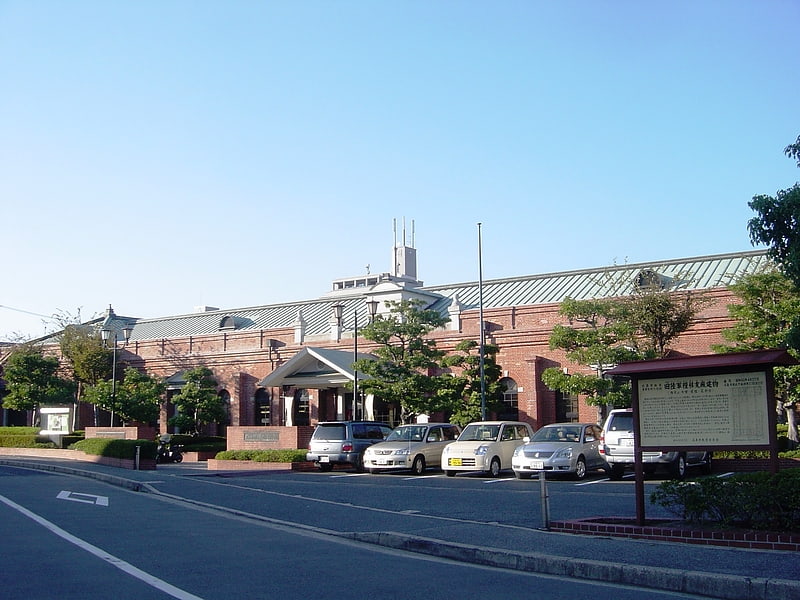
Also known as: 広島市郷土資料館
Museum in Hiroshima, Japan. The Hiroshima City Museum of History and Traditional Crafts is a history museum in Ujina-nishi Park in Hiroshima, Japan.[7]
Address: 2-6-20 Ujinamiyuki, Minami-ku, 734-0015 Setonaikai National Park
Hakata–Ōshima Bridge
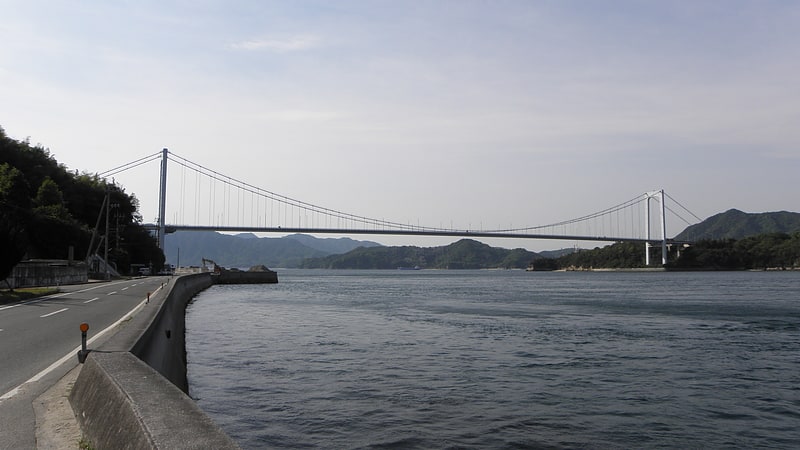
Also known as: 伯方・大島大橋
Suspension bridge in Imabari, Japan. The Hakata–Ōshima Bridge is a Japanese suspension bridge, part of the 59 kilometer Nishiseto Expressway connecting the islands of Honshū and Shikoku. Completed in 1988, it has a main span of 560 meters and connects Hakatajima with Ōshima. The expressway connects seven small islands and also includes several other long span bridges including the Tatara Bridge, the Innoshima Bridge, and the Kurushima-Kaikyō Bridge.[8]
Kotohiki Park
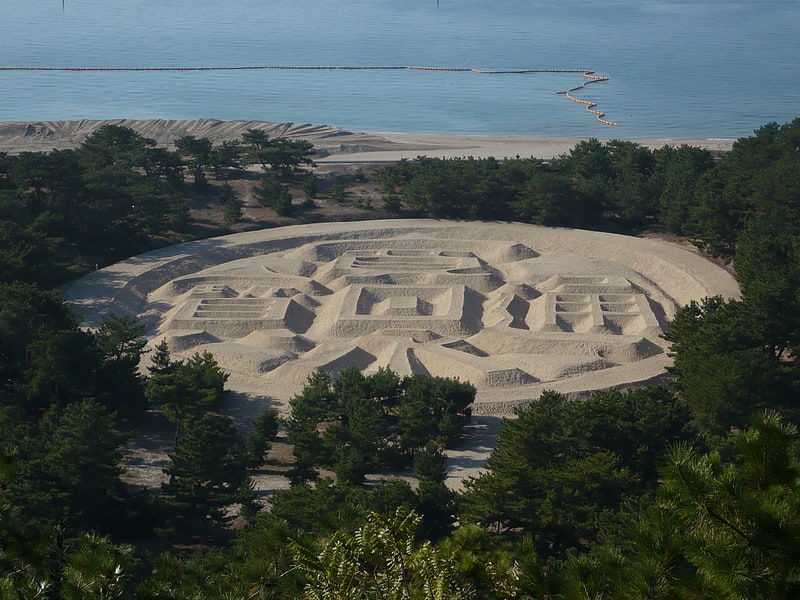
Also known as: 琴弾公園
Scenic spot in Kan'onji, Japan. Kotohiki Park is a nationally designated Place of Scenic Beauty in Kan'onji, Kagawa Prefecture, Japan. Located within the Setonaikai National Park, Kotohiki Park encompasses Zenigata suna-e, dating in origins to 1633 when it was created by the local people to greet their new daimyō Ikoma Takatoshi; Jinne-in and Kannon-ji, temples 68 and 69 of the Shikoku 88 temple pilgrimage; Kotohiki Hachiman-gū; and the pine-clad Ariake beach. The park is celebrated for its cherry blossoms, azaleas, wisteria, and camellias.[9]
Symbol Tower
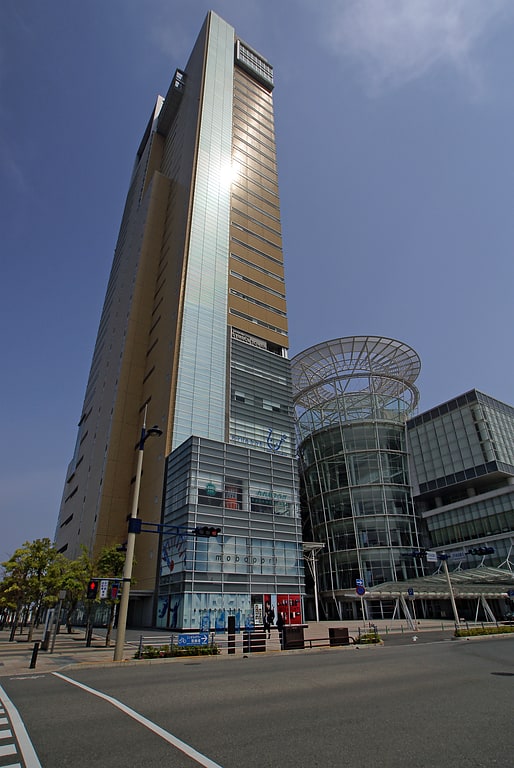
Also known as: 高松シンボルタワー
Skyscraper in Takamatsu, Japan. The Symbol Tower is a skyscraper located in Takamatsu, Kagawa Prefecture, Japan. Construction of the 151-metre, 30-story skyscraper was finished in 2001.[10]
Address: 2-1 Sunport, 760-0019 Setonaikai National Park
Toyo Ito Museum of Architecture
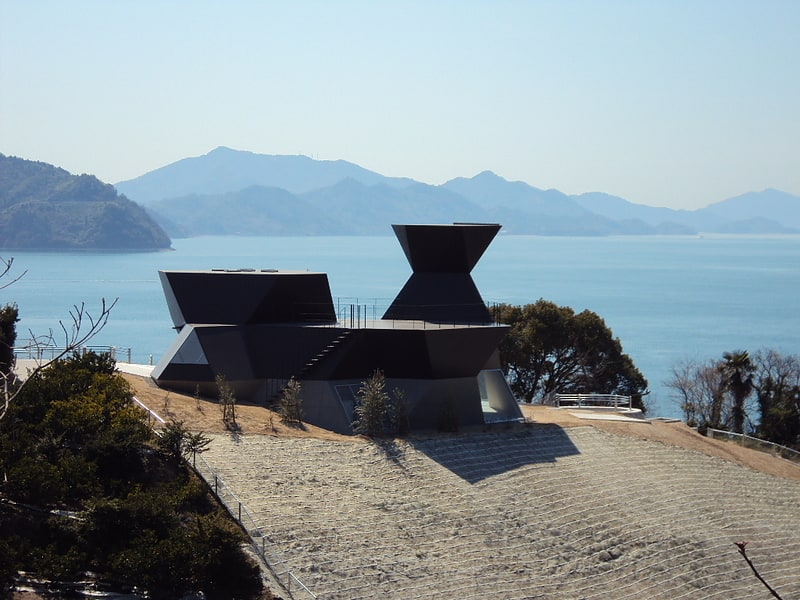
Also known as: 今治市伊東豊雄建築ミュージアム
Museum in Imabari, Japan. The Toyo Ito Museum of Architecture, Imabari is a museum of contemporary architecture and design located in Imabari, Ehime Prefecture.
The two small museum buildings, named Steel Hut and Silver Hut, both designed by Pritzker Prize winning architect Toyo Ito, are located on a promontory on Ōmishima, a small island in the middle of the Seto Inland Sea. Opened in 2011, the museum hosts exhibits and educational programs relating both to the work of Toyo Ito, regional development and other themes in Japanese contemporary architecture.[11]
Address: 2418 Omishimacho, Urado, 794-1308 Setonaikai National Park